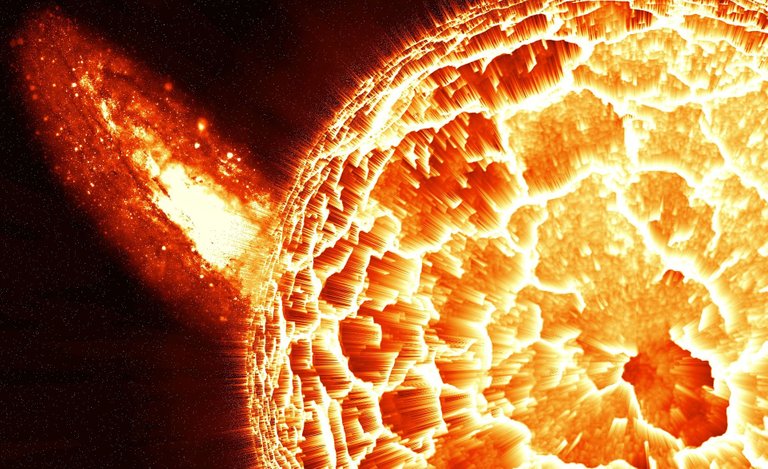Creating Earth’s Core’s Hellish Conditions
The outer core of our planet is mostly made from liquid iron and nickel under immense pressure. 135 to 330 gigapascal or 1.35 – 3.3 million atmospheres. It’s also hot as hell – 4 to 5 thousand Kelvin. It’s precisely these conditions that scientists recently recreated using powerful lasers.

- Be also sure to check out my other posts and follow me @kralizec and subscribe to my Youtube channel at Kralizec Gaming Youtube Channel
If you’d dig about 2.890 kilometers down you’d find the border of the outer core of our planet. This massive layer of liquid mater made mostly from iron and nickel is about 2.400 kilometers thick hiding the solid inner core that makes up the center of our planet.
The inner core is more like a star to a degree. With pressures between 330 to 360 gigapascals and temperatures of roughly 5,700 Kelvin – the temperature of the surface of the Sun. So, when you think about it we are walking on the surface of a Sun.
Now, when it comes to the outer core the conditions are just a little less hellish. Matter there is being wrecked by 135 to 330 gigapascals of pressure and melted by 4 – 5 thousand Kelvins of temperature. These conditions were recently reproduced by a team led by Sébastien Merkel from the Université of Lille in France. The scientists didn’t do this for fun. They are trying to understand the depths of the Earth that are actually much less understood than even exoplanets and far-away stars. In this particular case, they were also interested in the behavior of iron in these conditions and its structural deformations.
Under normal conditions, iron crystallizes in a cubic ladder. At extreme pressure, its crystals form in a hexagonal ladder. Merkel and his team wanted to know what happens at even higher pressures and temperatures such as can be found in the outer core. Thus, the researchers headed to the SLAC National Accelerator Laboratory to work with two lasers. Firing the optical laser into a microscopic sample of iron recreating the conditions or the outer core. More precisely pressure of 187 gigapascals and a temperature of 4070 Kelvin.
The second and certainly harder part was to measure the atomic structure of the iron. To do this, the scientists used an x-ray laser called Linac Coherent Light Source X-ray free electron laser. Using it they were able to measure the studied sample of iron in just a billionth of a second. From the measurements, they found out the iron crystal reacted to these ultra-extreme conditions by crystal twinning – the creation of crystals that share part of their surfaces.
These results will certainly be interesting for geologists that model the structure and the behavior of Earth’s depths and also other stellar bodies. They also have a large potential to help us understand collisions in space and other similar events. Some of the models and hypotheses could be disproven now.
Sources:
- If you like the content I’m producing about science maybe you will like the content I produce about gaming as well! Be sure to check out my other posts!